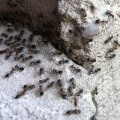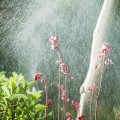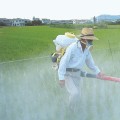There is increasing evidence that pesticide contamination has harmful effects on humans, pets, wildlife, birds, bees and other beneficial insects. Exposure to pesticides can be acute, a large amount at a time, such as when a young child walks on a recently treated lawn and ends up seriously ill and possibly hospitalized. Pesticides used in the control of weeds, insects, etc. These chemicals have been created to kill pests and most are broad-spectrum biocides.
This means they are poisonous to a wide variety of living organisms, including garden plants, wildlife, pets, your neighbors, your family, and you. Inert ingredients, which can comprise 50 to 99% of a pesticide formula, can actually be more toxic than active ingredients. EPA Does Not Claim It Will Protect Us From Harmful Pesticides. In fact, it is a violation of federal law to label any pesticide as “safe”, “harmless” or “non-toxic” to humans or pets.
US Congress says 90% of pesticides currently used lack health and safety testing required for registration, but are still sold and used. Of the most commonly used products on lawns, most lack the health and safety data required for registration. Pesticides and fertilizers can and do leak into private and public wells and water supplies. Unfortunately, there is currently no program to monitor drinking water for this type of contamination.
Many of the most commonly used lawn care chemicals have been detected in groundwater (for example,. Natural landscape maintenance programs can achieve a healthy and pest-free landscape using the latest scientific advances in organic agriculture and horticulture. For example, corn gluten is a pre-emergent natural herbicide and fertilizer now available to homeowners. The lawn can be enriched naturally by a fine spread of fertilizer in spring and autumn.
In addition, natural lawn care practices will lead to a healthy and vigorous lawn that resists pests and diseases. Pesticides, by their very nature, are toxic, their purpose is to kill insects and animals. Fertilizers are often combined with herbicides or made with products that can be toxic. Depending on how they are used and how children are exposed, they can be harmful.
Luckily, there are safer alternatives, especially for young children and infants. Herbicides are the most important component of the mixture of fertilizers, pesticides and herbicides that is poured annually on our lawn. Like pesticides, overexposure to herbicides can have deadly consequences. Studies have linked herbicide exposure to cancers of the colon, lung, nose, prostate and ovary, as well as leukemia and multiple myeloma.
Occupational exposure to herbicides such as agricultural workers and those who spray our yards has been shown to increase the risk of non-Hodgkin's lymphoma. Each 18 lb bag covers 2,000 square feet and lasts up to 3 months after application. To be absolutely sure that the lawn is devoid of fertilizer residues, you can wait up to 48 hours after fertilizer application for pets and children to walk on the lawn. The public plays an extremely important role in lawn pesticide reform, not only in the way they perceive the use of toxic pesticides in homes and communities, but also in the way they demand safe alternatives from retailers, organic services from lawn care providers and better protection against pesticide exposure.
of local policymakers. It is once again in early spring, when some homeowners begin to obsess over their lawn and apply pounds of toxic chemicals in their search for a lawn that looks like a lush green carpet. If all else fails, you can always hire a safe lawn care company and learn about the least toxic products that will provide a safe lawn for you, your neighbors and your family. Second, avoid lawns with flags that mark pesticide applications and stay away from treated grass for at least a few days, ideally until after a rain or watering treated grass.
There are only 8 steps you need to follow to get a toxic-free lawn you can be proud of, check out 8 steps to a toxic-free lawn. Instead, take an organic approach to lawn care or a less toxic approach where pesticides are avoided and the diversity of what grows on your lawn is accepted as good. Members of the National Coalition for Pesticide-Free Lawn are working to stop senseless exposure to lawn pesticides and to educate the public, landscape designers and policy makers on the use of non-toxic and less toxic lawn care practices and products. First of all, avoid using pesticides on lawns - they are not really necessary for a healthy, lush and attractive lawn.
During lawn care in summer, pests are out in full force and you may not know how to control them. This is due to intense advertising and promotional campaigns by lawn care companies and the increase in care services from franchises such as Trugreen-Chemlawn, Scotts Lawn Care, Lawn Doctor and others. Either way, it's very easy to find a packaged solution - lawn care chemicals that are very effective in removing weeds and helping to create a beautiful lawn. Many people use these chemicals on lawns and in the house where children and pets play, and some municipalities spray malathion from airplanes with blankets to control pests such as gypsy moths or mosquitoes.
. .







